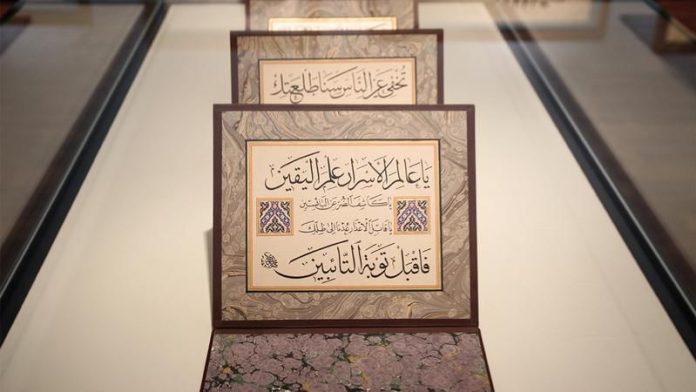SHARJAH, 1st May, 2024 (WAM) — The Sharjah Calligraphy Biennial has begun receiving submissions for participation in its eleventh edition, set to commence in October of the upcoming year.
Under the patronage of H.H. Dr. Sheikh Sultan bin Muhammed Al Qasimi, Supreme Council Member and Ruler of Sharjah, the event is organised by the Cultural Affairs Department at the Department of Culture in Sharjah and will span over a two-month period, featuring contributions from local, Arab, and international participants.
The Biennial’s executive committee had previously selected “Taraqim” as the theme for the 11th edition and opened submissions for artists. The committee has received calligraphic works from artists hailing from various countries worldwide, encompassing a spectrum from traditional to modern styles, in preparation for the screening committee’s selection process, which is scheduled for the current month of May. Following this process, the chosen artworks will be featured in the Biennial.
Mohammad Ibrahim Al Qaseer, Director of the Cultural Affairs Department at the Department of Culture in Sharjah and the Biennial’s Director, remarked, “The Biennial has evolved into a global platform, thanks to the generous support and patronage of His Highness the Ruler of Sharjah, positioning it as a bridge that brings cultures closer together.”
Al Qaseer emphasised that the submission of numerous calligraphic works from diverse countries underscores the Biennial’s global stature, which opens its doors to embrace the creations of artists, noting that the selected works embody the vision and spirit of the event, renewing the presentation of Arabic calligraphy in an innovative manner.
The main prize for the Biennial amounts to US$15,000, in addition to three prizes for the “Traditional” category, each valued at US$8,000, and three prizes for modern calligraphic arts, also valued at US$8,000 each. Furthermore, a special prize of the judging committee for Emirati calligraphers is worth US$8,000.
The general exhibition in the Biennial comprises two sections: “Traditional” and “Modern Calligraphic Arts.” The former highlights traditional and diverse styles, requiring adherence to artistic and aesthetic traditions in crafting traditional calligraphic artworks, utilising various known artistic formats such as circular compositions, squares, rectangles, decorations, Diwani scripts, and Kufic scripts.
The latter section encompasses modern calligraphic arts, including letter-based artworks, sculptural works, spatial compositions, as well as conceptual and installation arts, employing various artistic tools.

